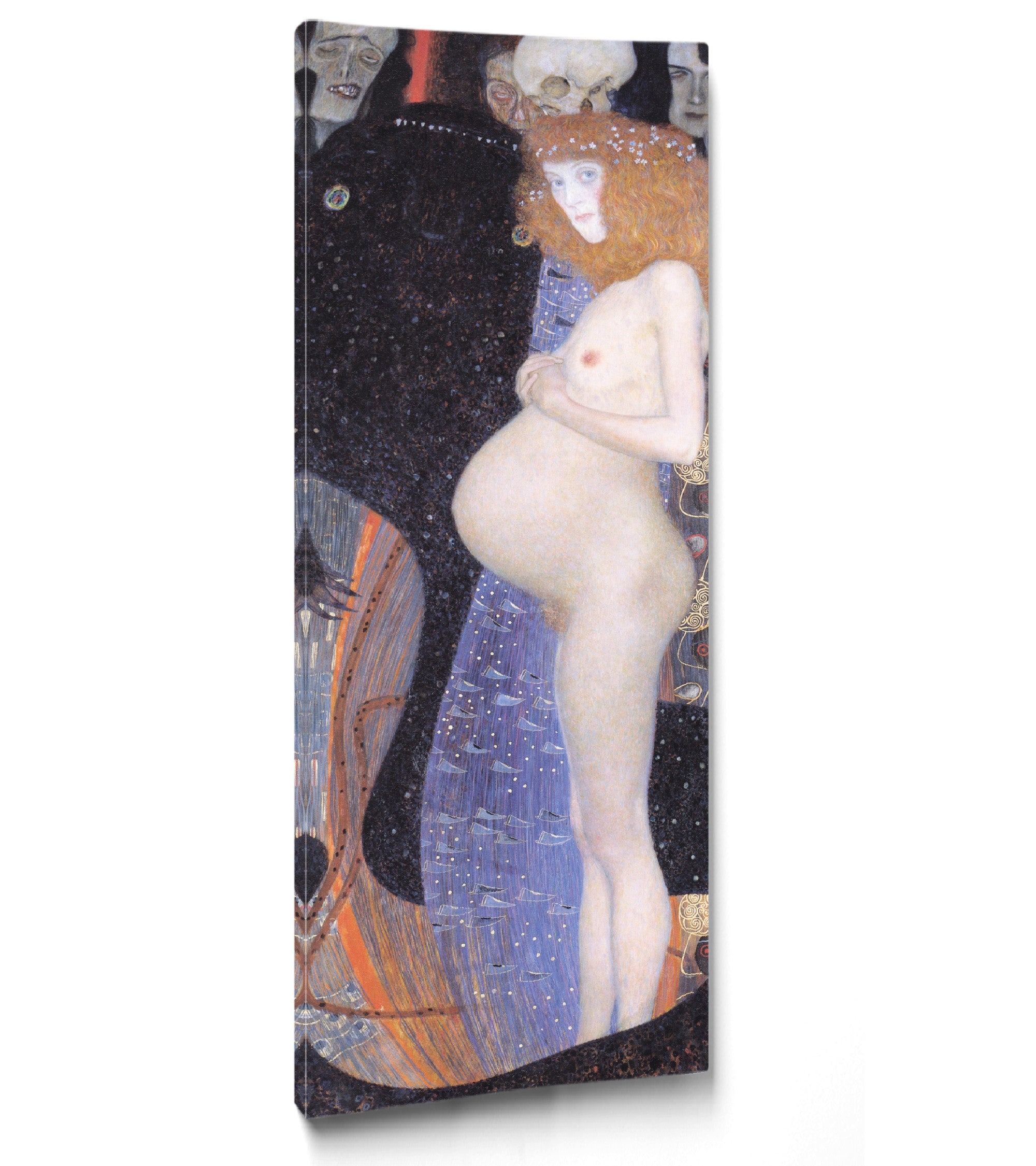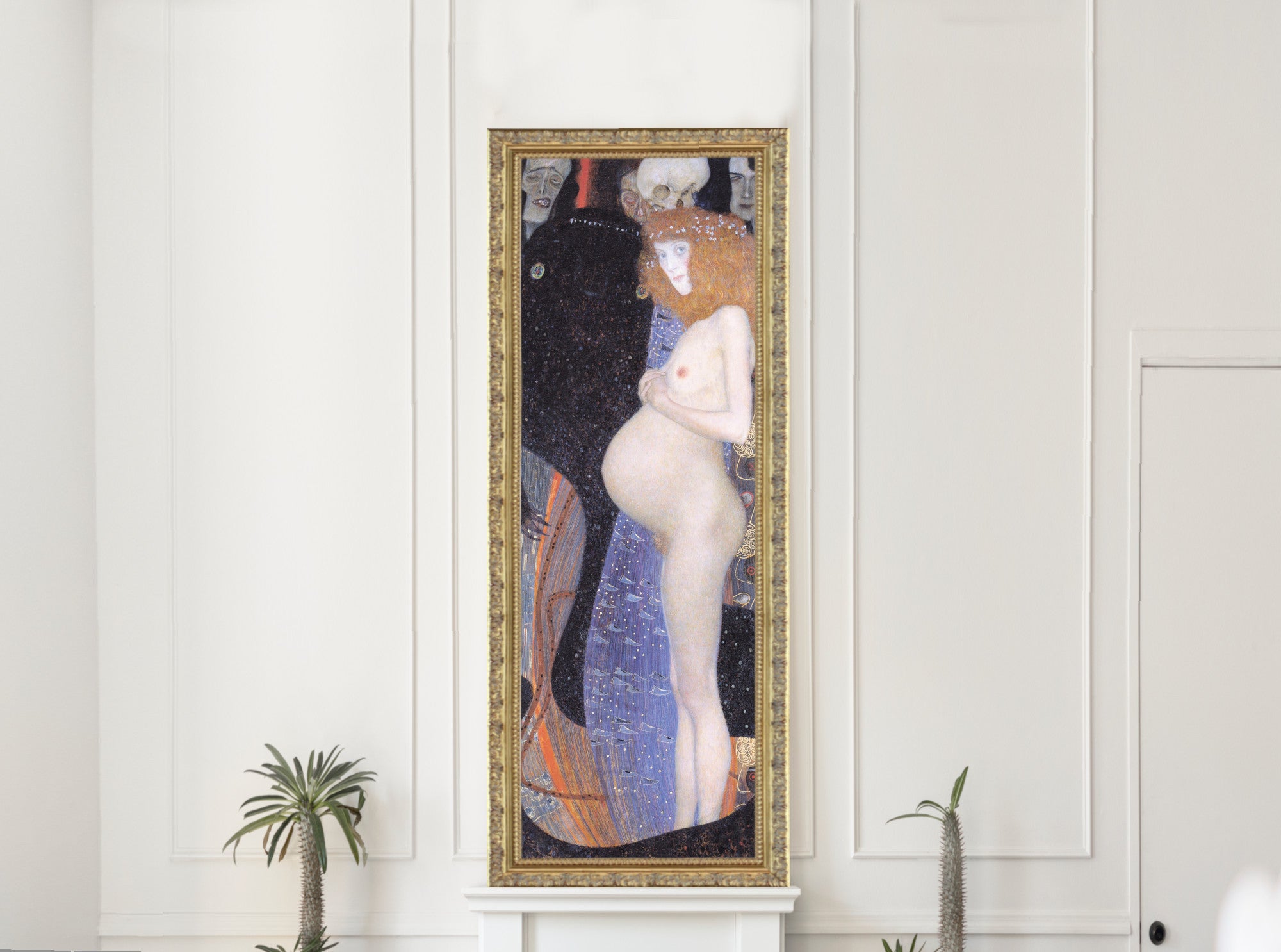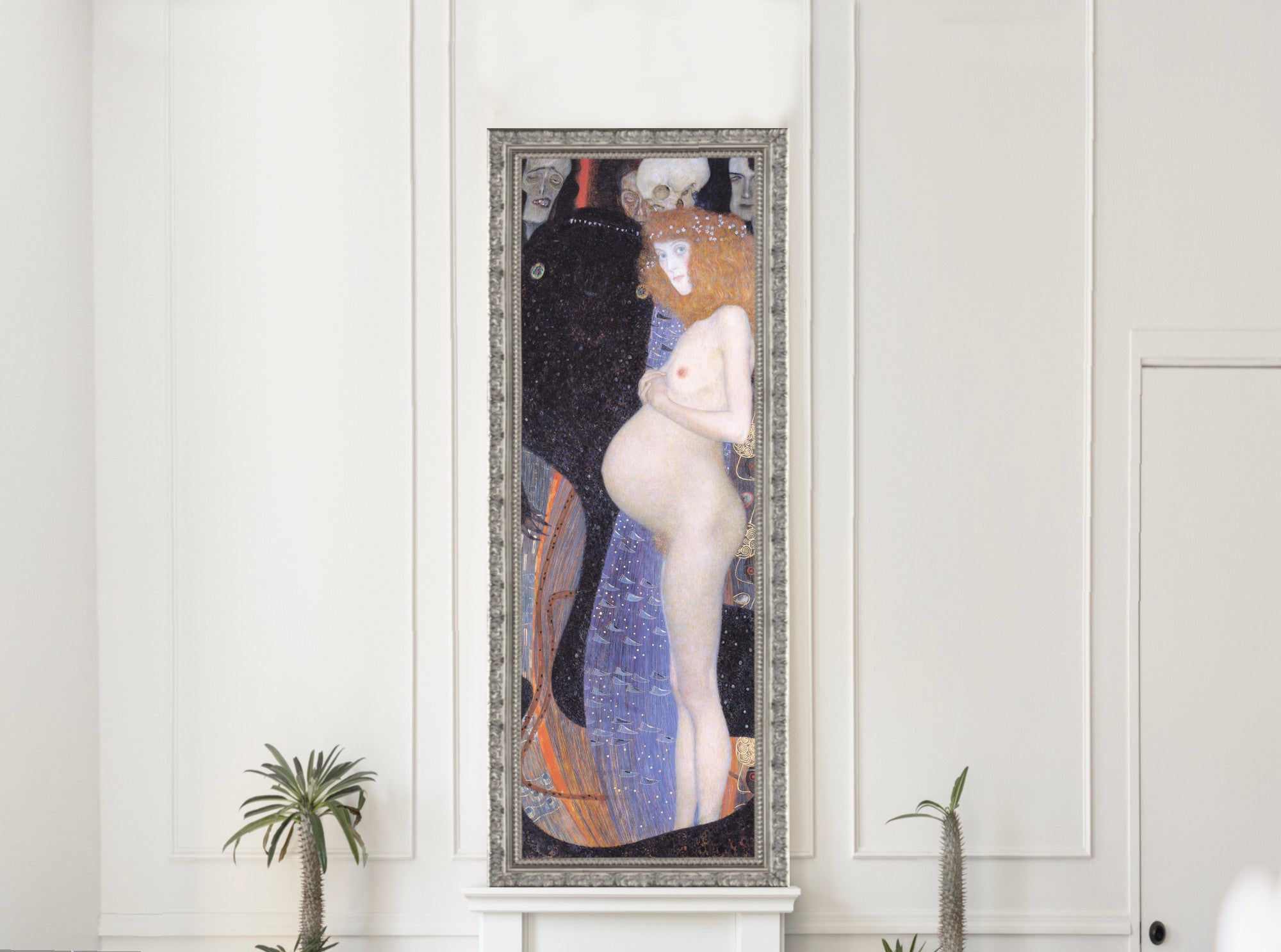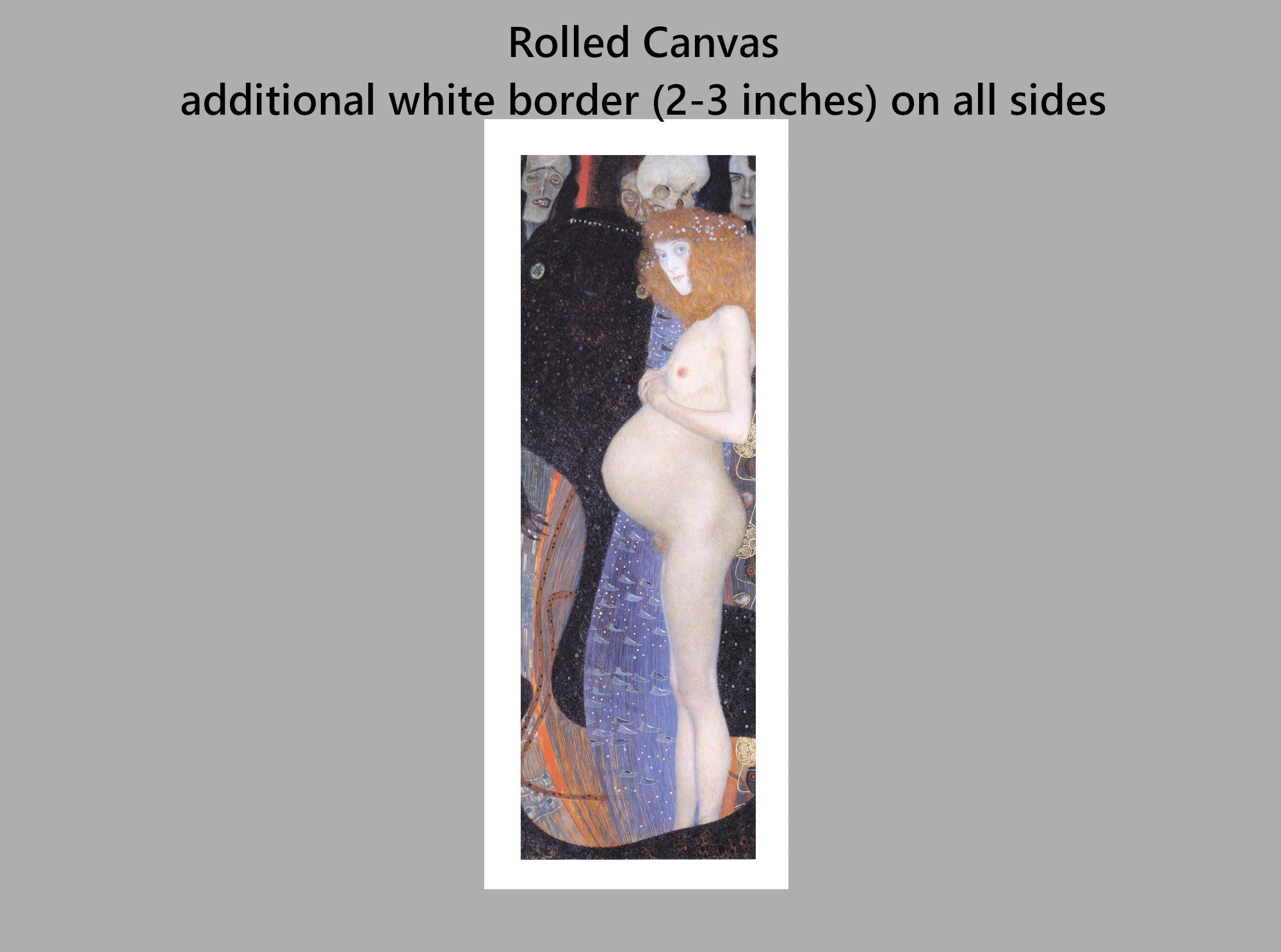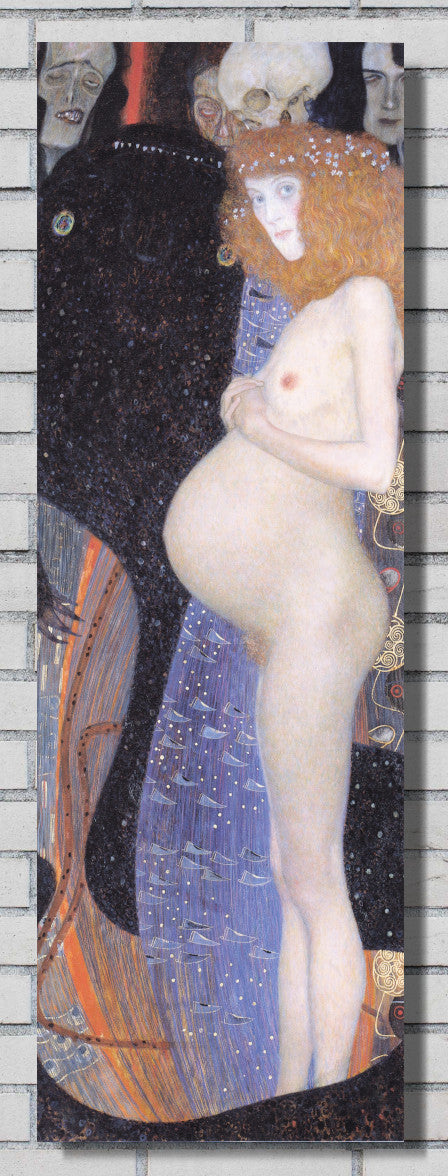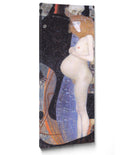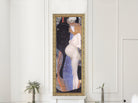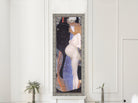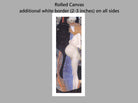Gustav Klimt, Hope I
Couldn't load pickup availability
BUY WITH CONFIDENCE
Not only does this painting show deathly figures in the background, but there also is a sea monster standing towards the left. The viewer can notice the monster's teeth along with its claw like hand that is located directly across from the woman's stomach and pelvic region. The sea monster has a large tail that wraps around the feet of the woman as if trying to capture her and continues out of the frame. Also, among the three sickly looking figures in the background, there is a skull located directly above the woman's head. This skull is attached to a blue body with varying shapes, lines, and colors. The skull represents death and decay while the three figures in the background symbolise disease, old age, and madness.
The skull behind the woman could be a reference to the art historical tradition of memento mori, which serves as a reminder that death is unavoidable. This tradition focuses on the idea that you can be thriving with life (such as the nude woman is) but tomorrow could bring the possibility of death. In Hope I the theme of life, death, and rebirth relate to the similar themes behind the tradition of memento mori. In art, memento mori is often represented by a skull, which we see present in the background of Hope I.
Klimt was an artist who broke with tradition in his depiction of nude figures. During this period Austrian artists were painting nude females, but these women often portrayed a great story or allegory and the artists covered their bodies with drapery. Klimt was unafraid to depict an exposed nude female without clothing or drapery covering her. The women he depicts, such as the woman in Hope I, have curly, out-of-control hair and he dares to depict their pubic hair as well. Bodily hair, especially pubic hair, was not seen as a beautiful physical trait in women, thus Klimt showed a new way of perceiving the nude female in art with Hope I.
Klimt intended to exhibit Hope I in November 1903 at the Vienna Secession Exhibition. He withdrew the painting on the advice of the Minister for Culture and Education. In 1905, Klimt wrote, "at the Klimt exhibition two years ago the painting could not be shown; superior powers prevented it". Then during his interview with Berta Zuckerkandl, in April 1905, he declared "Since the unfortunate State Commission, everyone in Vienna has got into the habit of blaming Minister von Hartel for all my other works, and in the end the Minister for Education must have imagined that he really carried the full responsibility. People seem to think that I was prevented from showing a certain painting in my retrospective because it might shock people. I withdrew it because l did not want to cause embarrassment to the Secession, but l myself would have defended my work."


All prints are made using archival art stocks and UV pigment inks to give up to 200 years life. Prints are sold unframed and unmounted.
All orders for unframed fine art prints and original paintings are dispatched within 2 working days of receipt of payment.
Orders for custom framed prints are dispatched within 4 working days.
All orders are fully tracked from dispatch to delivery at your home or business.
All print and original painting orders are fully insured against loss or damage in transit. We refund or replace any damaged or lost orders.
Buy with confidence - read what our satisfied customers have to say - Reviews
Fine art papers are printed without any additional white border Please let us know at the time of ordering if you would like a small additional white border.
Rolled canvas options have an additional white border of approximately 2.5 inches (7cm) on all 4 sides to aid stretching.
Ready to hang canvas panels are stretched on 1.5 inch deep solid pine frames from sustainable forestry sources. The image is mirrored on all 4 sides to give an aesthetically pleasing finish.
Why not have us gift wrap your order and attach a personalised message to the recipient. Available for all orders. Each order is hand wrapped in high quality gift wrap with meatllic ribbon and bow. Your personalised message is printed on a card which is included with your order.
Have your hand wrapped gift delivered directly to the recipient.
Full tracking and insurance included with every order.
Please note design may vary depending upon availability
Just purchase the gift wrap option HERE
We have a wide range of frames in standard sizes and we also make custom size frames.
To order a framed print:
1. select the print size you would like along with the print materials (matte paper, fine art paper).
2. Add your print choice to the basket.
3. Choose from our range of frames
4. Select the same size as the print you have added to your basket. If the frame size you want is not listed please contact us
5. Choose from the mount or no-mount option
6. Add your frame choice to the basket
7. Proceed to checkout.
Why Choose GalleryThane?
- Printed and framed in-house
- Free UK delivery
- Free EU and USA delivery on orders over £200
- Tracking and insurance included in every order
- Fast 1-3 day dispatch
- Gift wrapping service available
- Gallery quality materials
- Sustainable, eco-friendly packaging
- Great customer support
What makes our Prints and Canvas Panels so special

Latest Giclee Printing Technology
We have invested in the latest wide format print technology to produce museum quality giclee prints utilising the highest quality pigment inks to give outstanding colour reproduction.

Museum Quality Archival Fine Art Papers
We print on the finest quality fine art papers with textured, smooth and lustre finishes for prints which last a lifetime.
From aceo miniatures to 40x80 inch large format, every print has our lifetime quality guaranteee.

Solid Wood Frames, Cotton Canvas
All of the wood for our canvas panels and frames is responsibly sourced from manages forests. Our cotton canvas is completely seedless for the highest quality reproduction possible.

